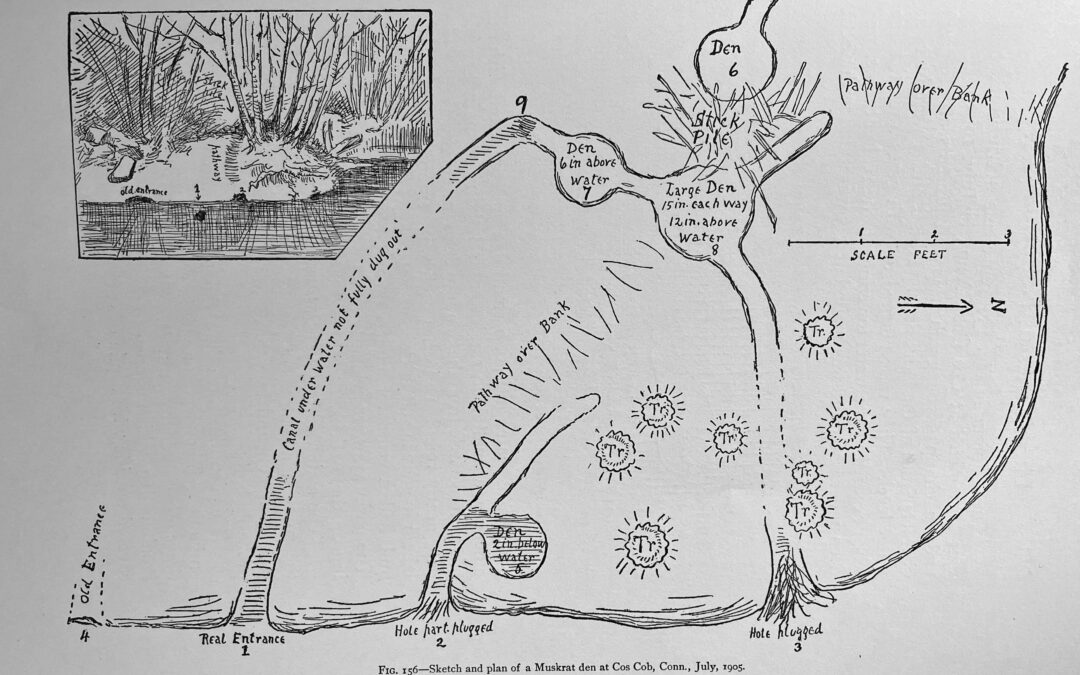Sketch and plan of a Muskrat den at Cos Cob, Conn., July, 1905, from Life-Histories of Northern Animals, 1909
What’s in a name? Apparently, the great Carl Linnaeus believed the Muskrat closely related to beavers, placing the creatures together in the genus Castor (1766). Subsequent examination instead showed the muskrat as a kind of giant Vole. (Beavers and Voles are in different families.) The Muskrat, had any been so inclined, could have learned of its mid-nineteenth century designation in the genus Fiber, the name used by Seton in Lives of Northern Animals. The aquatic rodent emerged (as one might say) as Ondatra zibethicus in 1980. But by whatever name, the muskrat can show itself as fearless and ferocious. My much larger dogs once harassed one of the diminutive beings, only to quickly realize themselves outmatched by the solitary warrior.
Seton wrote about them:
Muskrat Life-History
“The Muskrat is an inhabitant of every part of Manitoba. Except when seeking a new home it is never found away from water. Its special environment is marshy ponds and the banks of slow-running, sunny streams.
The home-locality of each individual is less than 200 yards across. If further from home than that, he is in foreign parts; doubtless traveling to seek his fortune. A Muskrat will live and thrive and be happy in a little pondy marsh that is even smaller than this, and never wish to leave it until it dries up.” (Pg. 540)
A Course in Muskrat Home Design
“The diagram in Fig. 156 represents a Muskrat’s home that I examined at Cos Cob, Conn., in July 1905. It was under a clump of young ash trees and presents all the usual characteristics of the bank dens. Nos. 2 and 3 were holes at water level. They were plugged up with grass and sticks as when exposed by water lowering; 1., the real entrance, was deep under water and was made later;
5 was a den with about 2 inches of water in it, 6, a small den not connected with the others; 7, a small den at a lower level than the main den; at 9 is a plunge hole from the den into deep water; 8 was the main den, nearly round, 15 inches each way, smoothed with great labour gnawing off thick roots. It was very near the surface and had a ventilator under the stick pile, as also had 6. The pathways were evidently made by the Muskrats in carrying up these sticks.” (Pg. 546)
The Green Grass of Home
“The main den had quantities of green grass and stalks in the corners; among these jewel-weed was prominent. This was fresh cut, and may have been either food or bedding, probably both.
The den illustrates the style of all those I have examined on banks. They have one main entrance under water, sometimes other smaller entrances. The tunnel leads up to a commodious den, which is open to the air at one small place, and covered outside with a pile of sticks and grasses.
The main features of this agree perfectly with those of the nest made in a rat-house. The stick pile over the roof shows how easily one grades into the other.
There was no dung anywhere in the dens; all was sweet and clean.” (Pg. 547)

